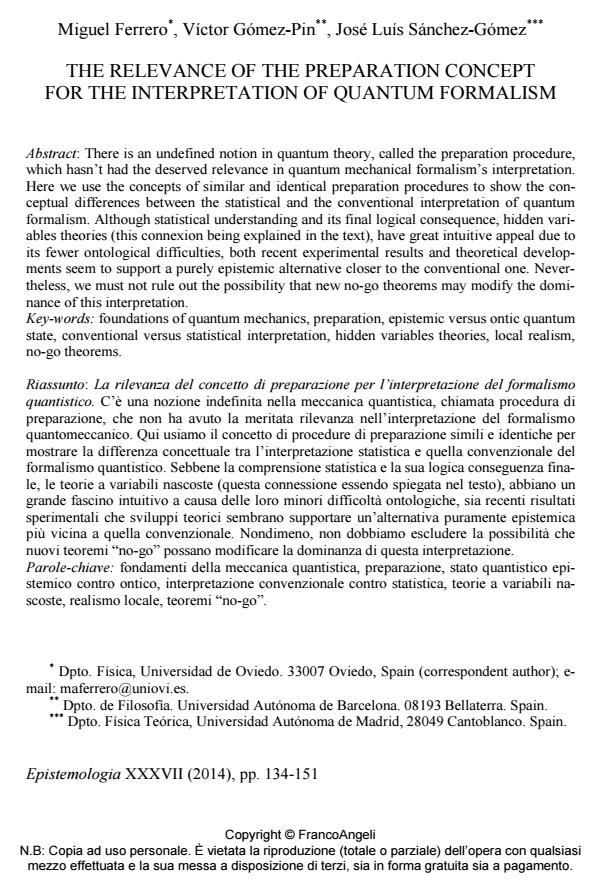The relevance of the preparation concept for the interpretation of quantum formalism
Journal title EPISTEMOLOGIA
Author/s Miguel Ferrero, Victor Gómez-Pin, José Luís Sánchez-Gómez
Publishing Year 2014 Issue 2014/1
Language English Pages 18 P. 134-151 File size 643 KB
DOI 10.3280/EPIS2014-001009
DOI is like a bar code for intellectual property: to have more infomation
click here
Below, you can see the article first page
If you want to buy this article in PDF format, you can do it, following the instructions to buy download credits

FrancoAngeli is member of Publishers International Linking Association, Inc (PILA), a not-for-profit association which run the CrossRef service enabling links to and from online scholarly content.
There is an undefined notion in quantum theory, called the preparation procedure, which hasn’t had the deserved relevance in quantum mechanical formalism’s interpretation. Here we use the concepts of similar and identical preparation procedures to show the conceptual differences between the statistical and the conventional interpretation of quantum formalism. Although statistical understanding and its final logical consequence, hidden variables theories (this connexion being explained in the text), have great intuitive appeal due to its fewer ontological difficulties, both recent experimental results and theoretical developments seem to support a purely epistemic alternative closer to the conventional one. Nevertheless, we must not rule out the possibility that new no-go theorems may modify the dominance of this interpretation.
Keywords: Foundations of quantum mechanics, preparation, epistemic versus ontic quantum state, conventional versus statistical interpretation, hidden variables theories, local realism, no-go theorems.
- Coming From Material Reality Miguel Ferrero, J. L. Sánchez-Gómez, in Foundations of Science /2015 pp.199
DOI: 10.1007/s10699-014-9362-2
Miguel Ferrero, Victor Gómez-Pin, José Luís Sánchez-Gómez, The relevance of the preparation concept for the interpretation of quantum formalism in "EPISTEMOLOGIA" 1/2014, pp 134-151, DOI: 10.3280/EPIS2014-001009